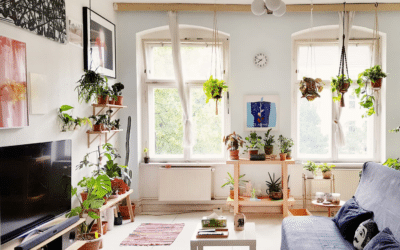Are you about to invest in the air conditioning system but have doubts about compatibility, efficiency, cost, quality and various other aspects? Before going with the options like central, window and ductless etc, you have to understand the technical terms “single-zone” and “multi-zone” systems. Custom Climates HVAC recommends the Mitsubishi brand when it comes to air conditioning your interiors whether it is residential or commercial infrastructure. All you need to figure out is the type of suitable zoning. Before suggesting the right one, we will elaborate on their basic definitions for your awareness.
Understanding Mitsubishi Single and Multi-Zone System
Mitsubishi’s single-zone system is perfect for those who want to cool or heat a single room or space in their home. These systems are energy efficient, quiet, and easy to install, making them a great choice for homeowners who want to add heating or cooling to a specific area in their home.
On the other hand, Mitsubishi multizone system is designed to provide heating and cooling to multiple rooms or areas in a home. These systems use one outdoor unit that is connected to multiple indoor units, which can be controlled independently, allowing you to adjust the temperature in different rooms according to individual preferences.
Both the single-zone and multi-zone systems use Mitsubishi’s advanced technology, which is designed to provide superior comfort and energy efficiency. The systems are also designed to be easy to use and maintain, which means that you can enjoy your comfortable home without any hassle.
Choosing Between Single Zone and Multi-Zone Mitsubishi Systems
When deciding between a single-zone and a multi-zone Mitsubishi system, there are several factors to consider. Here are some key things to keep in mind:
Number of rooms to be cooled or heated
A Mitsubishi single zone system is ideal for homeowners who only need to cool or heat a single room or area in their home, such as a bedroom, living room, or home office. These systems are easy to install, energy-efficient, and cost-effective, making them a great choice for those who want to add heating or cooling to a specific area in their home without the need for ductwork.
On the other hand, a multi-zone system is designed to provide heating and cooling to multiple rooms or areas in a home. These systems use one outdoor unit that is connected to multiple indoor units, which can be controlled independently, allowing you to adjust the temperature in different rooms according to individual preferences. Multi-zone systems are suggested by HVAC contractors to homeowners who want the flexibility to control the temperature in different areas of their home, and who want to avoid the need for multiple outdoor units and ductwork.
Energy Efficiency Depends on Area Coverage
When it comes to energy efficiency, single-zone systems are only feasible for smaller spaces or rooms that require heating or cooling. Since the unit is only heating or cooling a single area, it doesn’t require as much energy to operate as a multi-zone system. Additionally, single-zone systems can be turned off when the room is not in use, which can save energy and money over time.
Multi-zone systems are a more energy-efficient option for larger spaces or homes with multiple rooms that require heating or cooling. By using a single outdoor unit to power multiple indoor units, the overall energy consumption is lower than running separate single-zone systems for each room. Multi-zone systems also offer the ability to control the temperature in each room independently, which can result in more energy-efficient usage.
Installation considerations
For a single-zone system, professionals will typically consider the size of the room or space that needs to be heated or cooled, as well as the location of the unit and the type of mounting that will be used. They will also need to determine the appropriate size and capacity of the unit based on the square footage of the room or space and determined by a proper load calculation.
When it comes to installing a multi-zone system, HVAC Contractors will need to assess the number of indoor units required, the location of each unit, and the size and capacity of the outdoor unit needed to support the multiple indoor units. They will also need to consider the layout of the home or building, as well as any potential obstacles that could impact the installation, such as trees or other structures.
By taking these factors into consideration, you can choose the Mitsubishi Heating and Cooling system that best meets your needs and budget. Whether you opt for a single-zone or a multi-zone system, you can rest assured that you’re getting a high-quality, energy-efficient solution that will keep you comfortable all year round.



0 Comments